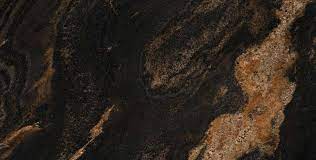White Marble: India's And Banswara's Best-Kept Secret
White marble, Banswara in particular, is an excellent type of white marble that has been around for centuries. It produces a unique aesthetic beauty and is perfect for architectural designs. One of India's best-kept secrets, its luxury and timeless appeal make it a popular choice for the wealthy and famous in countries such as the United States.
Banswara white marble, also known as the "Mahogany of India," is a type of white marble that is found only in the state of Gujarat. It has a beautiful deep mahogany colour and is ideal for ornate architectural designs. Although it has been around for centuries, it is relatively unknown in the Western world. This may be because it is not as readily available as some other types of marble, or it may be because its unique aesthetic appeal is not immediately apparent. Either way, Banswara marble is definitely worth discovering!
How White Marble Came to be in Banswara
Banswara, located in Rajasthan, is known for its white marble. The region has been producing this marble since the 16th century, and it is now one of India's best-kept secrets.
The Marble Industry Development Authority (MIDA) estimates that there are around 1,500 quarries in Banswara and 500 marble workshops. The white marble from Banswara is renowned for its softness and luster. It is also very durable, which makes it ideal for use in architecture and flooring.
The main sources of raw materials for the marble industry in Banswara are limestone and soil. However, a large number of artisans also work in the local workshops to produce various types of marbles, including black, pink, green, and blue colours.
What Is the Distinction Between Indian and Banswara White Marble?
Indian white marble is a popular choice for flooring and countertops in homes and businesses across the country. The stone is made from finely ground quartzite, which gives it a bright, polished finish. Indian white marble comes in several shades, including light beige, peach, and yellow. Banswara white marble, on the other hand, is a rarer variety of marble that originates from the state of Gujarat in India. The stone has a more muted colour than Indian white marble and a higher Mohs hardness rating. This makes it less likely to chip or scratch.
Why is Banswara's marble so much sought after?
Banswara marble is a type of white marble quarried in the city of Banswara, Rajasthan, India. It is noted for its finely grained texture and lustrous colour. The marble is used in flooring, countertops, and other decorative applications. Banswara marble is more popular than other types of white marble because of its unique texture and colour.
Why is Banswara's marble so extravagant?
Located in the ancient city of Banswara in Rajasthan, the marble quarries of this region are some of the most highly prized in India. Steeped in history and legend, these marble deposits have been used for centuries to create some of the world's most iconic monuments, including the Taj Mahal. Today, white marble is still one of India's most coveted exports, with vendors throughout the world vying for a slice of this stunning material.
What makes Banswara's marble so special?
For starters, it's incredibly rare. Only around 2% of all Indian marble is made from white varieties, and even more exclusive is the fact that this material only comes from Banswara. This means that not only is it some of the purest and whitest marble available on Earth, but it also has a rich history and lore to back it up.
Banswara's marble is also exceptionally beautiful. The creamy white coloration gives it a unique look that is hard to find elsewhere. And unlike other marbles, which can be rough and grainy to the touch, Banswara's Marble is velvety soft—perfect for use in high-end architectural projects like door handles and columns.
In short, if you're looking for something truly unique and special when it comes to marbles, you need to check out what Banswara has to offer!
How does the Chinese Exclusion Act impact white marble in India?
The Chinese Exclusion Act of 1882 impacted white marble production in India, as many white marble quarries were located in the treaty ports of Madras and Calcutta. The act barred all Chinese immigrants from entering the United States, and this led to a decline in demand for Indian white marble in America.
In response, some Indian businesses decided to shift their focus to exports to other countries, such as China. Meanwhile, other Indian quarry owners turned to black marble as the new export product. Today, white marble is still produced in small quantities in India, but it is largely nonexistent on the international market.



Comments
Post a Comment